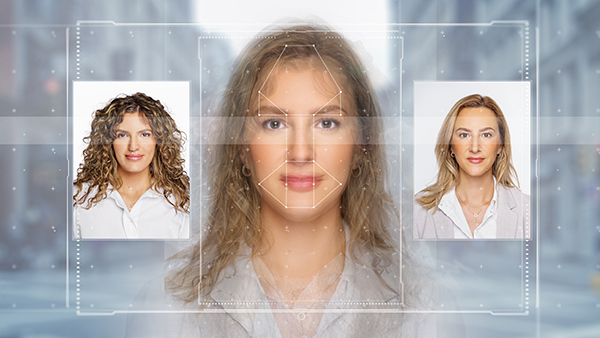NYPD has been stalking civilians with tracking robots, drones and GPS locators
11/27/2023 / By Zoey Sky

The activity of the New York City Police Department (NYPD) has raised several concerns amid the interest in maintaining privacy and the push to address overreaching surveillance.
Corinne Worthington, the Surveillance Technology Oversight Project’s (STOP) Research Manager, and Aaron Greenberg, STOP’s research intern, have warned that the NYPD has been operating surveillance technologies that track civilians.
According to the New York-based non-profit organization, this type of tracking includes the use of drones for aerial surveillance, GPS locators for tagging vehicles and robots for tracking movement within the city’s subway system.
STOP’s findings have implications that go beyond privacy invasion. Without accountability, the NYPD’s intrusive practices can be abused for unchecked power dynamics, which can then threaten the justice system and individual rights.
The Public Oversight of Surveillance Technology (POST) Act was introduced to prevent these issues as it requires the NYPD to be more transparent about surveillance practices. Additionally, the POST Act demands detailed disclosure of technology usage and data-sharing policies, along with impact assessments to warrant that surveillance is commensurate with justice.
However, there is proof that the NYPD has disregarded the POST Act’s regulations since its inception three years ago.
Worthington and Greenberg explained that the city council’s approval is required before the NYPD can renew contracts or acquire new technology. This suggestion follows the failure of existing oversight mechanisms to hold the NYPD accountable for compliance with the POST Act.
According to the NYPD’s report, the department failed to submit specifics about the technology it employs for surveillance, in turn failing to comply with the POST Act. The department has also strategically worked around existing loopholes, at times introducing new technologies as enhancements for current ones to avoid the need for justifying these additions.
Additionally, the NYPD’s report on the technologies’ impact lacks the necessary details, at times concealing crucial information such as their technology vendors.
K5 robots, StarChase and Digidog
Early in 2013, Mayor Eric Adams held a press conference in Times Square to launch three new surveillance tools that will be piloted by the NYPD, namely the K5 Autonomous Security (K5), which will be deployed in a Times Square subway station; the StarChase system that shoots GPS tags at fleeing cars; and “Digidog,” a four-legged robot that was canceled by the previous administration following public criticism. (Related: NYPD deploys robot cop to Times Square subway station.)
The department started using K5 and the Digidog last summer. The Adams administration claimed that these tools would help protect both officers and civilians.
However, instead of releasing new impact and use policies that describe exactly what these tools can do and how they’ll be used, the NYPD only updated existing policies with brief addendums.
A day after the press conference, Michael Sisitzky, assistant policy director at the New York Civil Liberties Union, warned that what happened at the event was just as predicted.
Based on the NYPD report, the department’s use of the word “enhancement” is crucial.
According to the POST Act, if the NYPD wants to “acquire or acquires enhancements to surveillance technology” or operate surveillance technology for “a purpose or in a manner not previously disclosed,” then the existing impact and use policy should receive an addendum.
The Office of the Inspector General (OIG) mentioned other issues with the NYPD report, such as the use of “generic and general language in the impact and use policies.”
Because of these and other issues, the OIG explained that it was unable to conduct an audit of the impact and use policies, as required by the POST Act. Instead, their report included 15 recommendations for the NYPD. One of the recommendations is for the NYPD to issue an impact and use policies for each individual surveillance technology.
Surveillance.news has more articles about police surveillance in the United States.
Watch the video below to learn how Amazon Ring and police departments are working together to invade the privacy of citizens.
This video is from the Tenth Amendment Center channel on Brighteon.com.
More related stories:
British government caught surveilling social media presence of school staff members.
EU visitors will soon be subject to facial scans and fingerprinting under new initiative.
SPY IN THE SKY: NYPD will use surveillance drones to monitor private Labor Day parties this weekend.
Sources include:
Submit a correction >>
Tagged Under:
AI, big government, computing, cyber war, drones, future science, future tech, Glitch, GPS trackers, information technology, insanity, national security, New York Police Department, nyc police dog, police robots, police state, privacy watch, robo-dog, robotics, spy gate, surveillance, Surveillance Technology Oversight Project, watched
This article may contain statements that reflect the opinion of the author
RECENT NEWS & ARTICLES
COPYRIGHT © 2018 WATCHED.NEWS
All content posted on this site is protected under Free Speech. Watched.news is not responsible for content written by contributing authors. The information on this site is provided for educational and entertainment purposes only. It is not intended as a substitute for professional advice of any kind. Watched.news assumes no responsibility for the use or misuse of this material. All trademarks, registered trademarks and service marks mentioned on this site are the property of their respective owners.




















